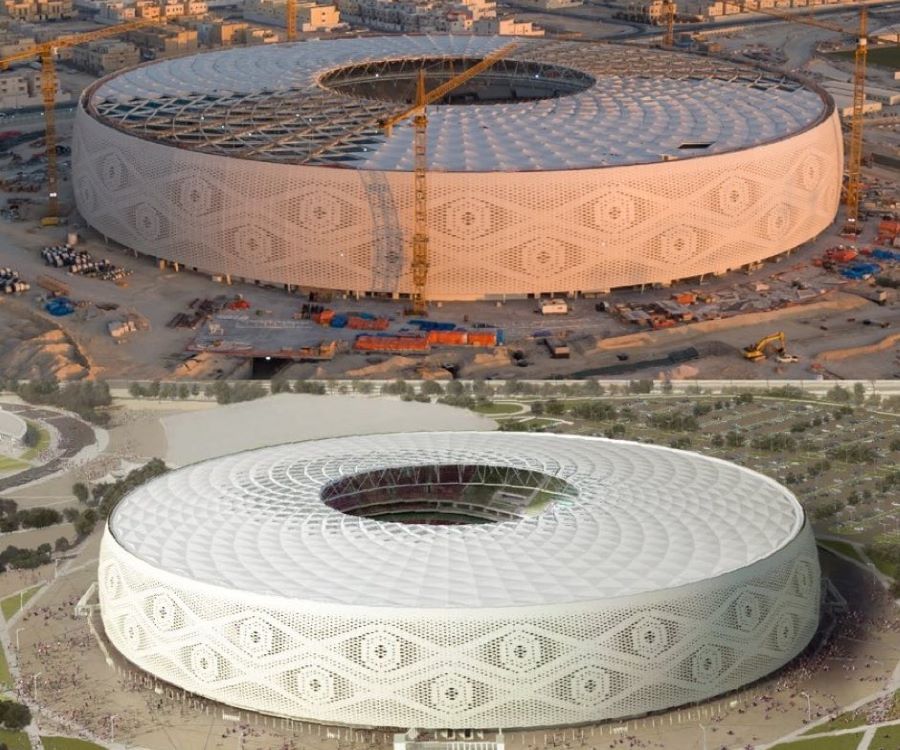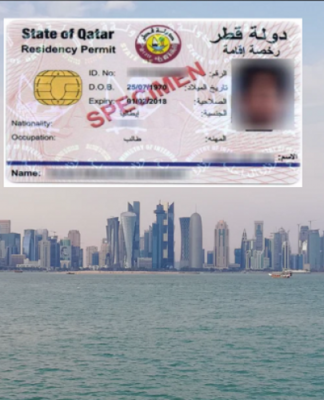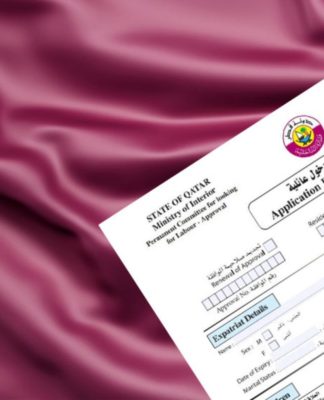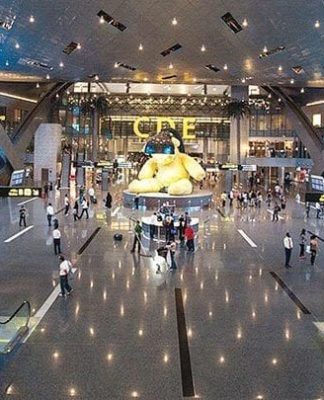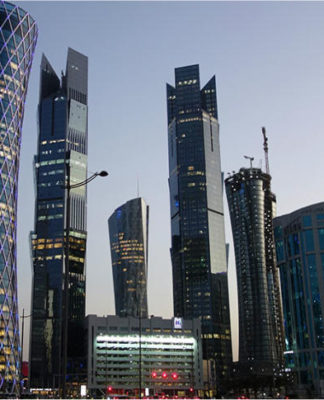Under the supervision of Eng. Saud Al-Ansari, Director of the Al-Thumama Stadium project, the project managed to achieve a new record, after the Al-Thumama Stadium project team celebrated last year by registering more than 10 million working hours without hindering the progress of construction work.
Saud Al-Ansari said in an exclusive interview with Al Sharq that “the total number of working hours in the project so far has reached more than 20 million working hours since the start of the work three years ago, and the number of working hours without accidents exceeded 18 million.”
He also talked about the development of construction works with the unique architectural parameter, and said that the pace of work in the stadium is accelerating, as the rate of implementation of works in the project has reached more than 76%, and he stressed that work is continuing in the implementation of the works of Al-Thumama World Cup according to the predetermined schedule, and it is scheduled The main contractor works are completed in 2021.
As for the advantages of the project, the project manager emphasized that the administration took into account in the early design stages the needs of the area surrounding the stadium and its future uses, and this was determined after holding a series of meetings with a number of authorities responsible for urban planning for the region and in coordination with them, the project was planned It includes many uses in line with the future needs of the region.
The stadium’s capacity is 40,000 seats, and it will be reduced to 20,000 seats after the tournament ends. It also includes more than 1500 seats for media professionals, a conference room with international specifications, and four locker rooms for players.
The engineer stressed that the design was keen to meet the needs of the various categories of fans, including those with special needs, where special positions, entrances and seats were created after consulting specialists in the field according to international standards and requirements, in order to ensure the organization of a championship appropriate for all, characterized by ease of access and movement, and to leave a sustainable legacy that takes into account the requirements All members of society.
The sustainable design of Al Thumama Stadium guarantees the provision of about 40% of the pure water compared to the traditional designs of the stadiums. The treated water is used for some appropriate purposes in the project, knowing that the project’s high committee made sure to use local plants in the green areas of the project.
It is scheduled to take advantage of the upper terraces area after dismantling it in the establishment of a modern hotel and clinic affiliated to the Aspetar Sports Medicine Hospital to serve athletes and residents of the region.
Ten high-quality training pitches will also be provided along with the changing rooms and other accompanying services that Qatar and international clubs will benefit from after the tournament.
The area surrounding the stadium will turn into a community center of attraction that includes commercial spaces, a mosque and various buildings that include gyms and water activities centers, a running track and others for cycling that connects to the bicycle path planned by Ashghal to serve the surrounding area.
The Al-Thumama Stadium also aims to obtain the G-SAS® 4-star global sustainability rating system in design and construction. Efforts to achieve this include updating the energy center at the stadium site to comply with the latest standards, and great efforts have been made in the design and implementation stages to achieve many aspects of sustainability, including water and energy rationalization, selecting the most appropriate materials for construction, and recycling and reducing waste.
It is noteworthy that Al Thumama Stadium, which stuck to clinging to the habits of “Do Qatar” by quoting its external features from the “cranial” shape that men, youth and children put on their heads, made the stadium win in May 2018 the Best Design Award in the category of “Sports Facilities and Stadiums Under Construction” From the MIBIM Award for Future Architecture Projects Competition.














